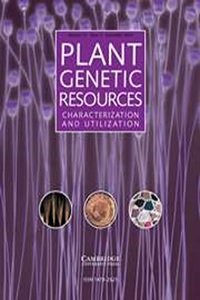Genetic variation, Heritability estimates and GXE effects on yield traits of Mesoamerican common bean (Phaseolus vulgaris L) germplasm in Uganda
Germplasm of common beans from the Mesoamerican gene pool races: Durango, Jalisco, Mesoamerica and Guatemala have highest genetic variation for the crop's improvement. The objective was to assign 50 common bean germplasm in Uganda into its gene pool races based on analyses of population structure. Secondly, to estimate heritability and effects of genotype × environment (GXE) interaction on common bean agronomic and yield traits in space and time. Sample genomic DNA was amplified in 2011 with 22 Simple sequence repeat markers (SSRs) and alleles separated using capillary electrophoresis. Field evaluations were conducted in 2010 and 2011 at NaCRRI and 2015 at CIAT – Kawanda. Multivariate analyses of SSRs data identified four subgroups within the germplasm: K4.1–K4.4, with corresponding Wrights fixation indices (F ST ) as 0.1829 for K4.1, 0.1585 for K4.4, 0.1579 for K4.2 and least for K4.3 at 0.0678. Gene pool race admixtures in the population (14%) were notable and attributed to gene flow. Four superior parents currently used in improving resistance to major diseases grouped as; Jalisco for MLB49-89A; Mesoamerica for MCM5001 and G2333; Durango for MEXICO 54. Heritability values for yield traits estimated using phenotypic data from above fixed parents, was above 0.81. Season and location had significant effect (P < 0.05) on numbers of: flower buds per inflorescence, pod formation and weight of 100 seeds. The findings will improve understanding of co-evolutionary relationships between bean hosts and pathogens for better disease management and will broaden the germplasm base for improving other tropical production constraints.

